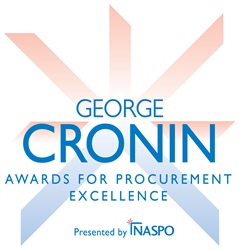- February 15, 2015
- Posted by: James
- Category: News

State of California: Modeling the Path to Award
What is the best model for successfully awarding a contract that meets the needs of a procurement office’s stakeholders?
This is a question that faced the California Procurement Division’s Multiple Awards Program Section (MAPS) in August of 2013. Their response was to completely reimagine their awards process and the contract itself. These efforts earned the state the 2014 Silver Cronin Award for their nomination titled “Modeling the Path to Award.”
After implementation of the fifth acquisition of their Master Service Agreement (MSA) for Information Technology (IT) Consulting Services, the division was facing the prospect of awards to less than 25 of their 179 participating proposers. It was apparent that this award rate would not be sufficient to meet the needs of the over 350 California state government entities that were to receive services from these awards. Additionally, MAPS had received feedback from these stakeholders that they wanted an extensive selection of contractors that offered flexibility and competitive pricing.
In order to develop new models that would provide the results their stakeholders needed MAPS made the decision to reexamine their current procurement process and contracts. They began by cancelling the fifth MSA acquisition and extending the current one. MAPS then established a procurement team made up of representatives from multiple agencies each bringing their own practices and priorities to the group.
In order to develop new models that would provide the results their stakeholders needed MAPS made the decision to reexamine their current procurement process and contracts. They began by cancelling the fifth MSA acquisition and extending the current one. MAPS then established a procurement team made up of representatives from multiple agencies each bringing their own practices and priorities to the group.
Their efforts for increased transparency included a streamlined, paperless proposal process for suppliers that featured an informational webinar on how to complete the RFP’s proposal template. Additionally, the revised RFP process involved submitting administrative and technical proposals first, which allowed the state and proposer to then discuss any issues and potential revisions. This transparency, combined with flexibility in price negotiations, allowed proposers multiple opportunities to formulate pricing.
The results of this overhaul were significant and established a new precedent for both the solicitation process and the development of an elastic contract. The new MSA award rate was 82 percent, with 155 of the 189 proposers receiving awards. This included 102 small businesses and 20 Disabled Veteran businesses. Additionally, there were substantial price drops for hourly rates, this included as much as 54.4 percent in one classification. Both the state agencies and supplier communities expressed a great deal of satisfaction with the changes. These results have compelled the MAPS team to share the models through customer forums and conferences.
“The process changes continue to be easily transferable,” said Susan Chan MAPS manager. “We have been able to reduce MSA acquisition cycles and increase award rates while promoting a supplier to state friendly interface.”





